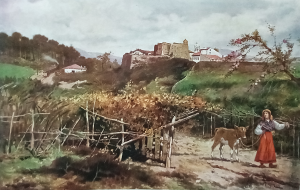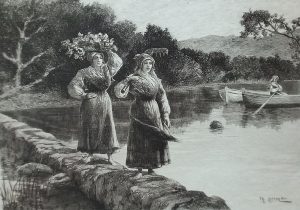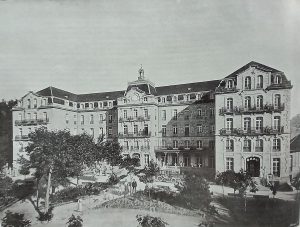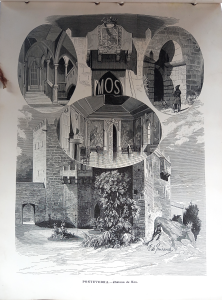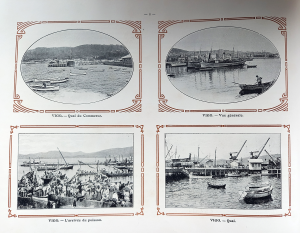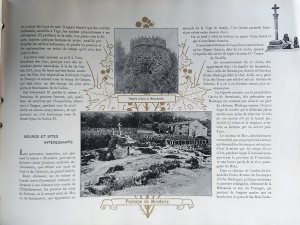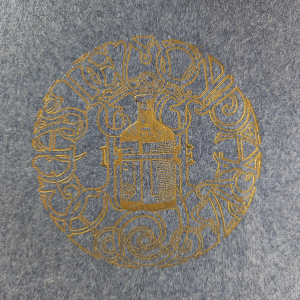MONDARIZ
450.00 €
.
DESCRIPTION
Book: Mondariz
Publisher: Gran Hotel-Balneario de Mondariz
Printer: Sucesores de Rivadeneyra
Publication place: Madrid
Publication year: 1906
Language: French
Size: 29 x 39 cm.
Pages: 50
Specifications: Item accompanied by a photocopy of the Spanish edition. There is another edition in English in 1908.
.
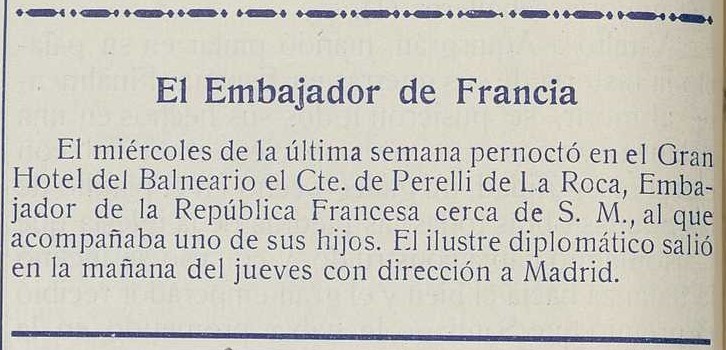
La Temporada en Mondariz, año XLI, no. 9, August 4, 1929. La Coruña, Real Academia Galega

Francis Alphonsus Bourne, archbishop of Westminster and future cardinal, at Mondariz Gran Hotel. Nuevo Mundo, n.º 805, June 10, 1909, Madrid, Biblioteca Nacional de España
Balneario de Mondariz is a spa that is nourished by two water springs called Troncoso and Gándara. Its history begins with the discovery of the first in 1862 by the parish priest Domingo Blanco Lage (1809-1886) who, upon once noticing the existence of water with bubbles on the ground, decided to taste it, being sure by its astringent and spicy flavour, it had to possess minerals beneficial to health. He experimented with some patients and verified its high effectiveness, so he prepare a sample for analysis by the Puenteareas pharmacist, who certified that the composition of the water resembled that of Verín in Orense and the French one from Vichy (Taboada Leal, p.179). Blanco requested exploitation licence from the Mondariz City Council on June 2, 1870, citing his work in channeling, caring for and disseminating the waters (La Temporada en Mondariz no. 1, 1905). The City Council forwarded the request to the Provincial Council, which agreed to his petition and ordered the City Council to invest the capital obtained from the export of bottles in the conservation of the fountain, declared for public use (La Temporada, no. 7, 1905).
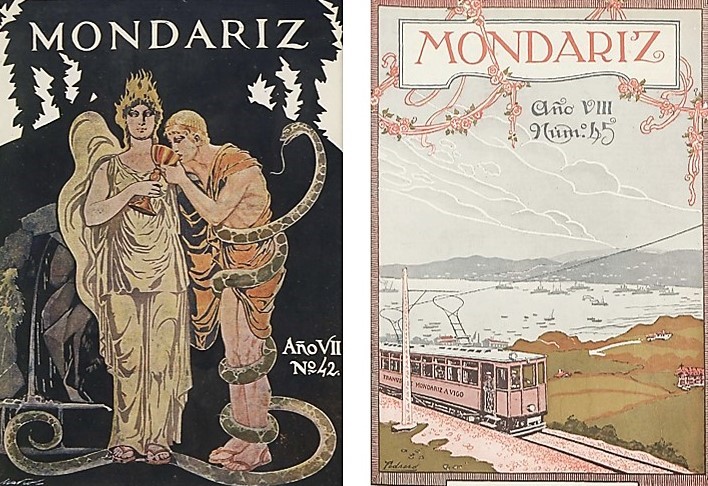
Mondariz, Magazine. Madrid, Biblioteca Nacional de España
In turn, on July 8, 1870, the doctor Enrique Peinador arrived in Mondariz as interim director of the Fuente de Troncoso, who, aware of the existence of another spring in the spot of Gándara through the work of Pascual Madoz, began to inspect the area with an engineer of mines until he managed to find it in 1871 (Mondariz, no. 7, 1915). In 1872 he, his mother and his brother acquired Gándara and the lands that housed the spring and on February 22, 1873 the latter, Ramón, a lawyer, obtained a licence to erect a thermal establishment there and also use the Troncoso spring, whose waters had the same properties (La Temporada, no. 3, 1905). Finally, in 1886 they also bought the place called Saidoiro, located on the left bank of the Tea River, where the Troncoso spring flows (La Temporada, no. 2, 1905).
Friction between the Peinador family and the Mondariz City Council increased, ending their disputes by settling them in court. The City Council claimed that the Saidoiro land had belonged to it since time immemorial, having registered its possession since 1881 according to certification from the Property Registry. In Saidoiro, the Troncoso spring arises “on the bank and left bank of the Tea River. The waters are cold, and their classification is acidic-alkaline-ferruginous-carbonate” (Pleito, p. 6). The municipality adds that if it did not oppose the concession granted to Ramón Peinador it was because in his request he referred only to the Gándara spring and some “leaks that spring from the banks of the Tea”. The City Council did not suspect that with this circumlocution Mr. Peinador was referring to Troncoso without expressly mentioning it, which he did not find out until the fact was consummated.
In response to the lawsuit filed by the City Council, the representative of the Peinadors argued that the Tea channel, at the point where the source is, borders with land on Mount Saidoiro, property of Enrique Peinador, who purchased it by public deeds dated November 13, 1886 to José Paramés, who in turn had acquired it from María Rosa Guisado and siblings by another dated December 30, 1886 [sic], both registered in the Property Registry. He insists that “the City Council does not have nor does it own nor did it have nor has it owned in the past, a single inch of land between the riverbed and Mr. Peinador’s property. … The City Council does not have, own, have nor ever possessed any communal land, or its own, on the left bank of the Tea at the site named Saidoiro… It is not true that the Municipality has been in possession of the fountain in the years from 62 to 73, but simply that the sick, residents or non-residents of Mondariz, made communal use of it, without anyone managing or exploiting it, least of all the City Council, which in its budgets of that time did not include the slightest item for income or for spring expenses; that he did not have an employee to supervise the application of the waters, nor did he pay a contribution to the Treasury for the use” (Pleito, pp. 28-30).
The Court of First Instance of Puenteareas ruled on August 8, 1902 in favour of the City Council: “I must and do condemn these [the Peinadors] to abandon and cease the use of the Fuente de Troncoso, of which possession will be given to the Mondariz City Council…” (Pleito p. 146). An appeal was filed before the Court of La Coruña, and its civil chamber resolved in ruling 24/1905 of February 1 to revoke the ruling (Mondariz, year XVII, no. 1, 1905), to which the City Council responded by presentation of a cassation appeal before the Supreme Court, which definitively concluded the case in its ruling 156/1906 of February 6: “WE RULED: That we must declare and declare that there is no grounds for the cassation appeal for violation of law filed by the City Council of Mondariz, whom we condemn to pay the costs…” (Mondariz, year XVIII, no. 1, 1906).
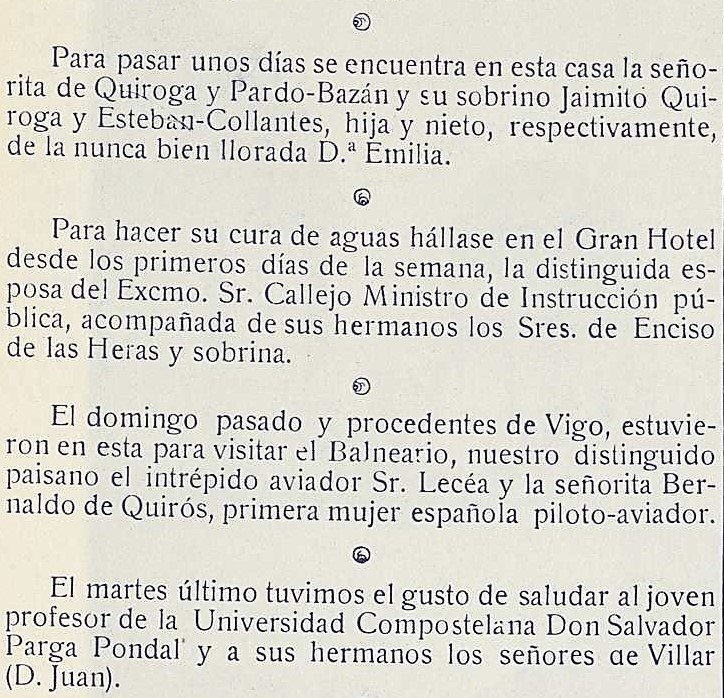
La Temporada en Mondariz, año XLI, no. 14, September 8, 1929. La Coruña, Real Academia Galega
The architectural project, in line with the unequivocal intention of its promoters to make Mondariz one of the references of international thermalism, at the level of Vichy or Spa, was left in the hands of two undisputed professionals with very personal work such as Jenaro de la Fuente and Antonio Palacios and takes shape in samples that oscillate between the solutions of the regionalist eclecticism of the former and a more or less historicist or classicist self-repressed modernism, depending on the case, of the latter in collaboration with his partner Joaquín Otamendi. The buildings should serve to organize an autonomous center with its own urban layout that would develop from the noble downtown. Enrique Peinador’s efforts reached the point of wanting to provide a worthy and rich past to a place that, as far as is known, never went beyond being more than a wasteland. For this purpose, he commissioned stained glass windows to be placed in the dome of the mausoleum of Fuente de Gándara with representations of the marriage in 1282 of King Don Dinis I with Isabel of Aragon, later canonized as Saint Isabel of Portugal, which absurdly according to Gerardo Álvarez Limeses (to him this preposterous conclusion, not sufficiently corrected, is attributed) took place in Troncoso, a fact that would certify its relevance in the early Middle Ages (Anonymous, “Lo que fue Troncoso”, La Temporada, year XIV, no. 8, July 20, 1902). The problem is that those nuptials, of course, were not celebrated in Troncoso, but in Trancoso, a city located shortly south of the Douro, in the interior of Portugal, at the same latitude as that of Aveiro.
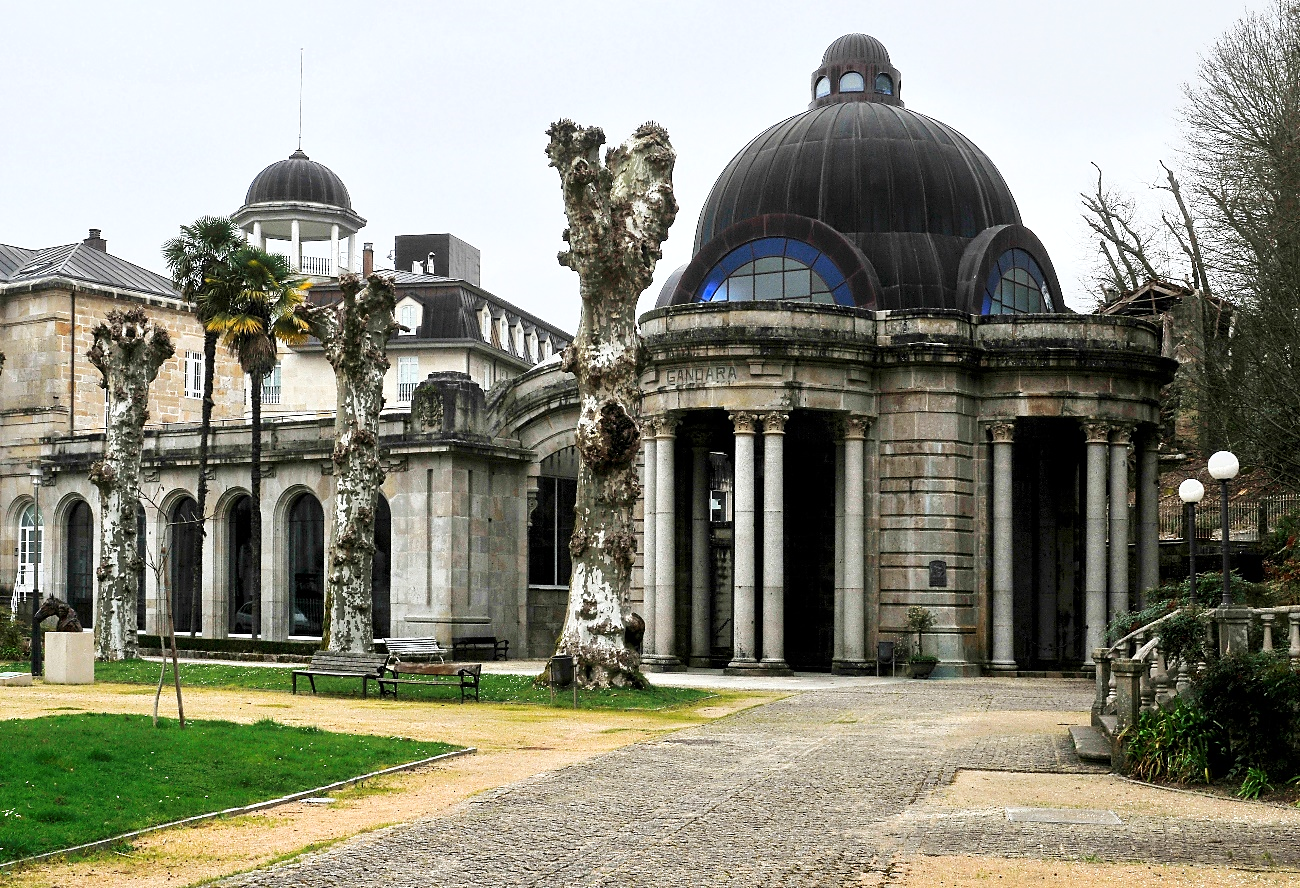
Mausoleum of Fuente de Gándara. Antonio Palacios and Joaquín Otamendi. Photography Luis Bartolomé Marcos
In any case, and under the protection of the Municipal Statute of 1925, king Alfonso XIII approved the creation of the new municipality of Mondariz-Balneario, with the title of town and an area of just 2.4 km2, the smallest in Galicia. However, in the 1930s, the decline of thermal tourism, the establishment of the Republic, the Civil War and the subsequent World War II unintentionally ended up turning the brilliant spa complex into a sublime place of canonical romanticism, which knew how to await with dignified haughtiness the hour of his resurrection from the last years of the 20th century.
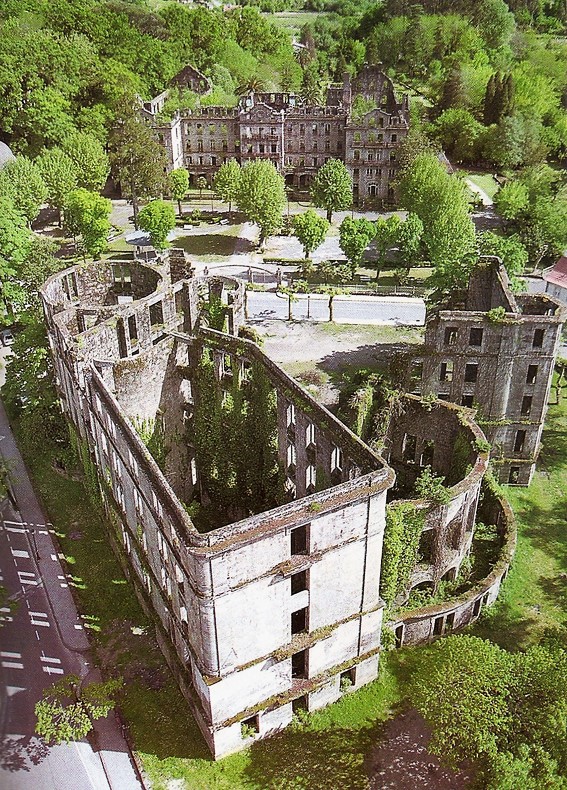
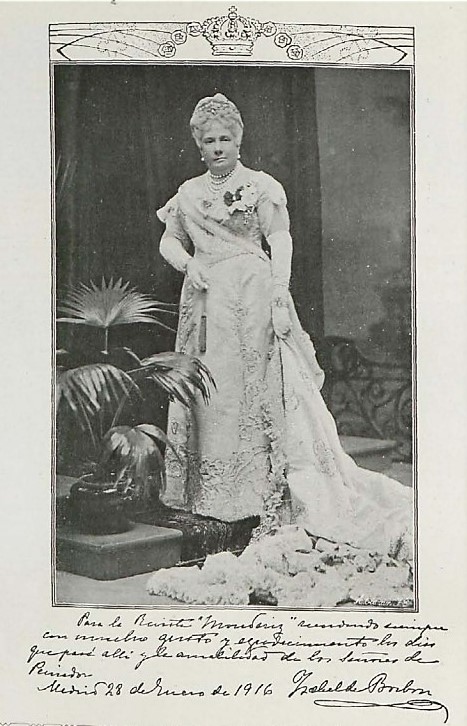
Dedicated photography of the infanta Isabel de Borbón. Mondariz, no. 9, February 20, 1916. Madrid, Biblioteca Nacional de España
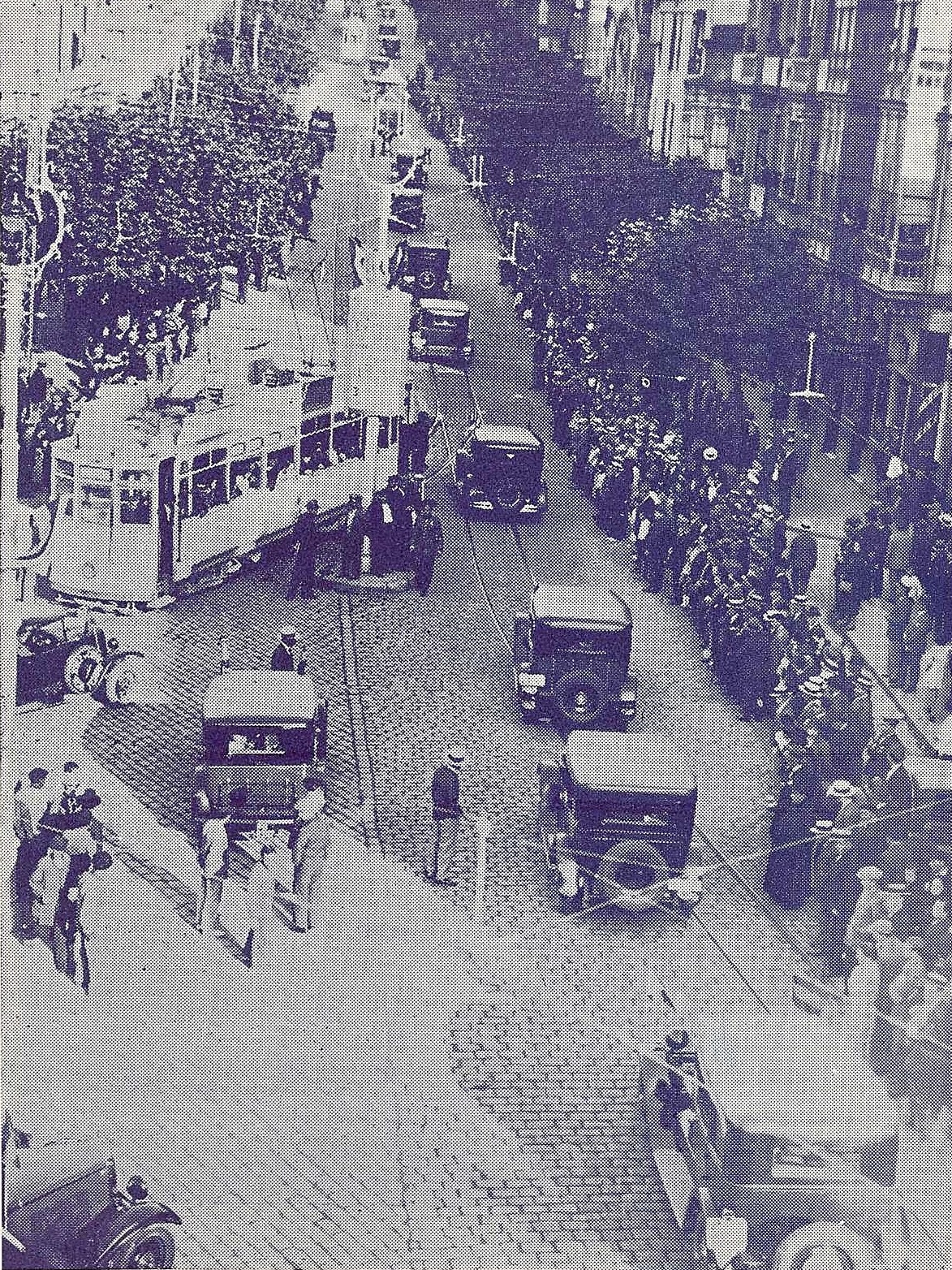
Vigo. A delegation of authorities leaving from Urzáiz Street to Mondariz to honor the President of the Government. La Temporada, year XLI, no. 12, August 25, 1929. La Coruña, Real Academia Galega
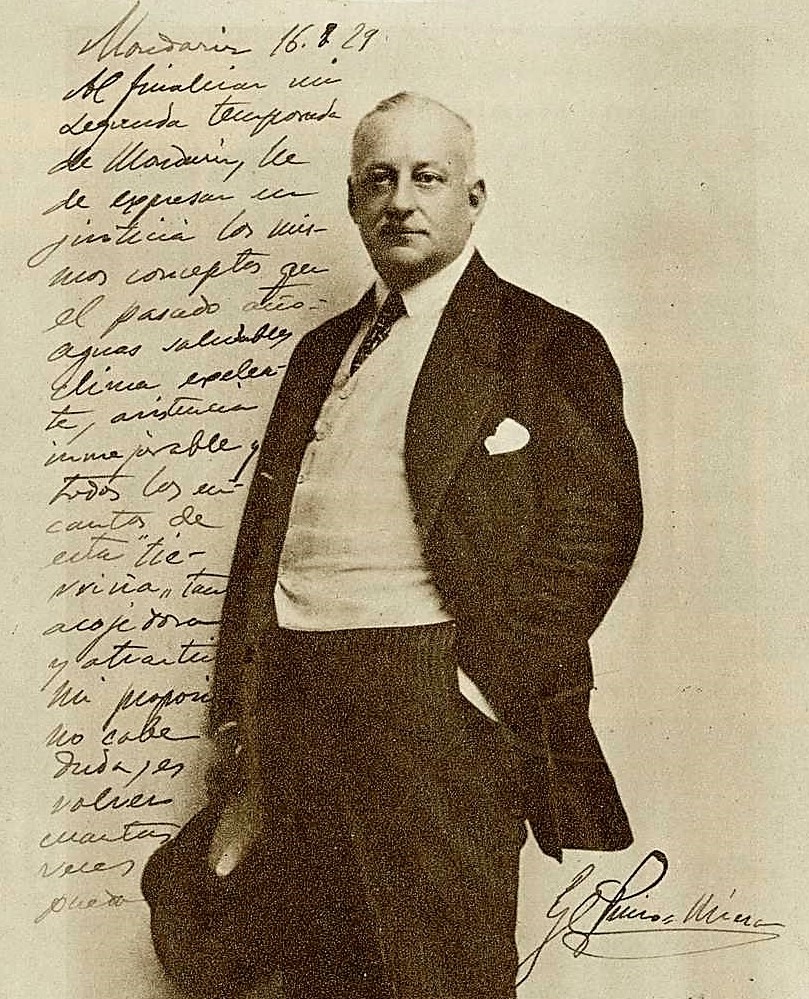
Dedicated photography of the President of the Government Miguel Primo de Rivera before leaving the spa facilities. La Temporada, year XLI, no. 12, August 25, 1929. La Coruña, Real Academia Galega
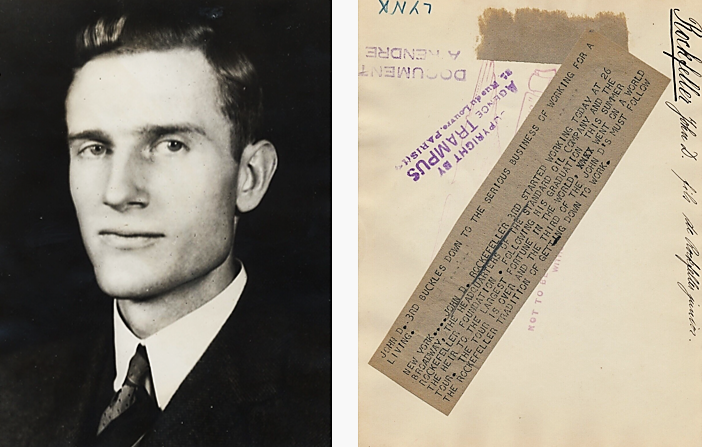
John Rockefeller III (1906-1978). The text of the telegram sent from New York indicates that day the heir to the largest fortune in the world began working at Standard Oil and the Rockefeller Foundation, after having graduated and returning from a world tour. During his trip he met with Primo de Rivera in Mondariz, which is known only from a reference found by the journalist Fernando Rodríguez Ojea in the disappeared Vigo newspaper El Pueblo Gallego, later corroborated by himself in the magnate’s diary provided by the Rockefeller Foundation of New York. Private Collection
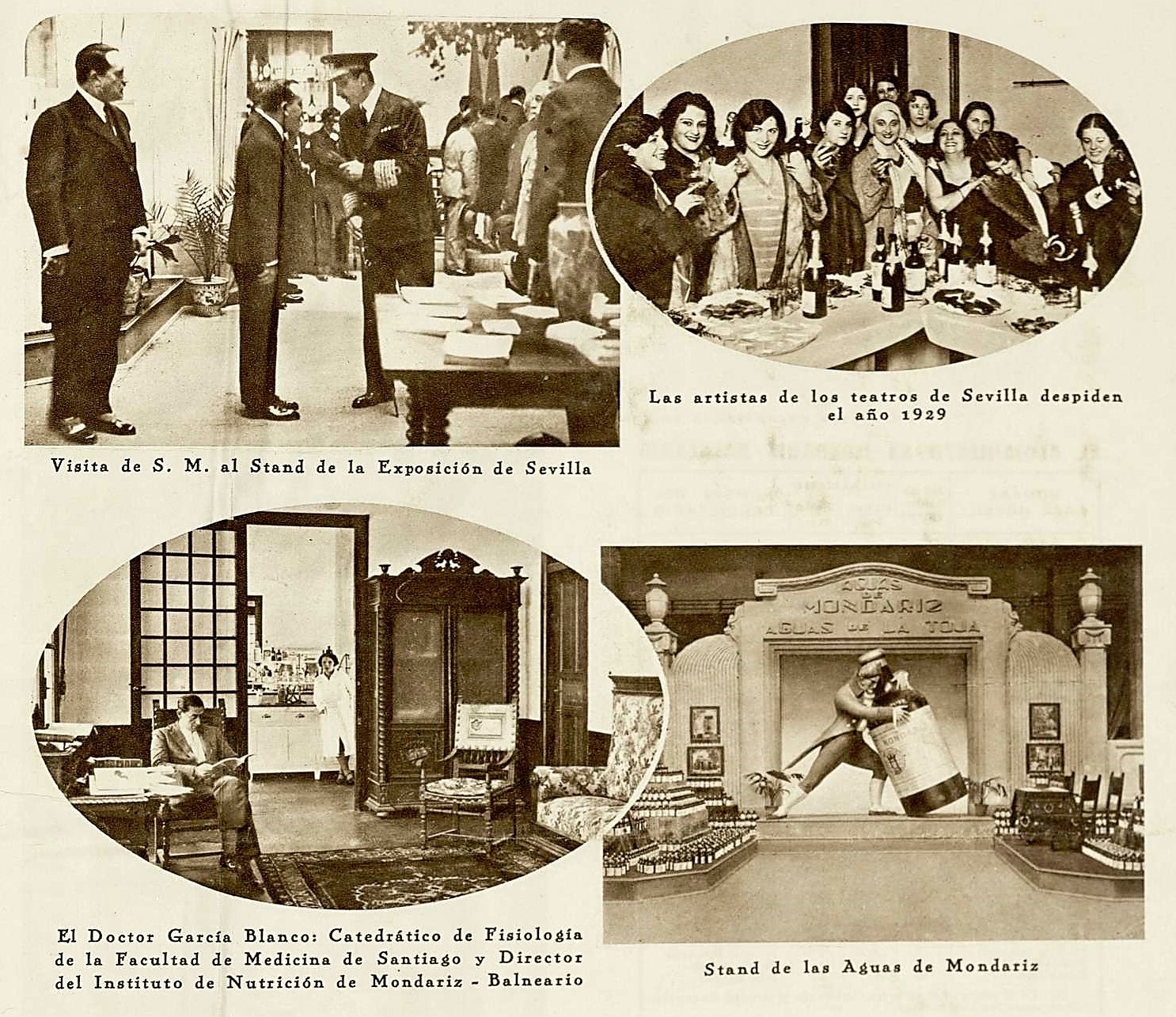
King Alfonso XIII visits the stand of Mondariz at the Ibero-American Exposition in Seville in 1929. La Temporada en Mondariz, year XLI, no. 12, August 25, 1929. La Coruña, Real Academia Galega

Interior. Montajes CIAB wood engineering. https://montajesciab.com/
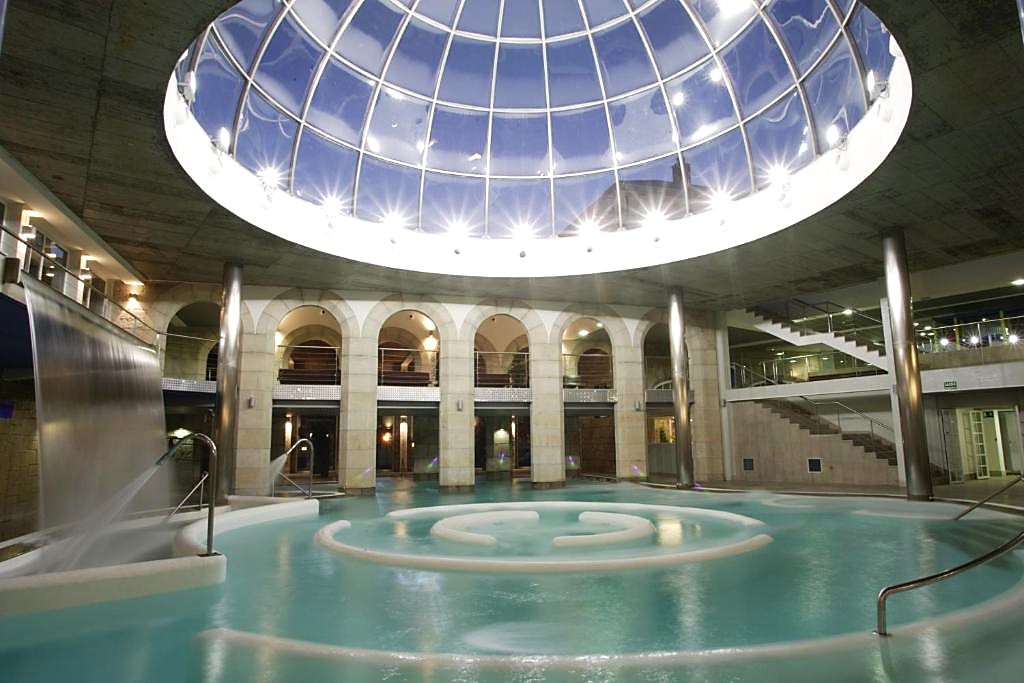
Interior. Photo ABC
Information
Biblioteca Nacional de España. https://www.bne.es/es
Real Academia Galega. https://academia.gal/
Aguas de Mondariz. Un pleito sobre la Fuente de Troncoso. Madrid, Sucesores de Ribadeneyra, 1903.
Las aguas de Mondariz. Álbum-Guía. Madrid, Sucesores de Rivadeneyra, 1899
Mondariz. Revista Mensual (Madrid, 1915-1922)
La Temporada en Mondariz. Revista. (Mondariz (1888-1931)
María Jesús del CASTILLO CAMPOS, Historia del Balneario de Mondariz hasta 1936. Tesis doctoral. Universidad Complutense, Facultad de Medicina, Madrid, 1992
Emilia PARDO BAZÁN: “La vida contemporánea. Mondariz”, en Las aguas de Mondariz. Álbum-Guía 1899.
Yolanda PÉREZ SÁNCHEZ, El Balneario de Mondariz, La creación de un lugar, 1873-1931. Tesis doctoral. Universidad de Santiago de Compostela, Facultad de Geografía e Historia, Departamento de Historia del Arte, Santiago, 2005.
Nicolás TABOADA LEAL, Consideraciones generales acerca del territorio de Galicia y sus Aguas Minerales. Hidrología Médica de Galicia, Madrid, Pedro Núñez, 1877







